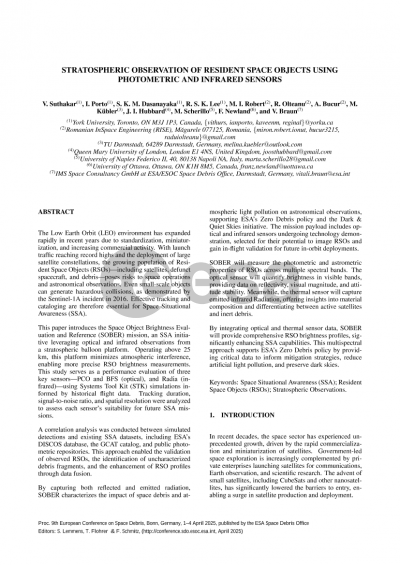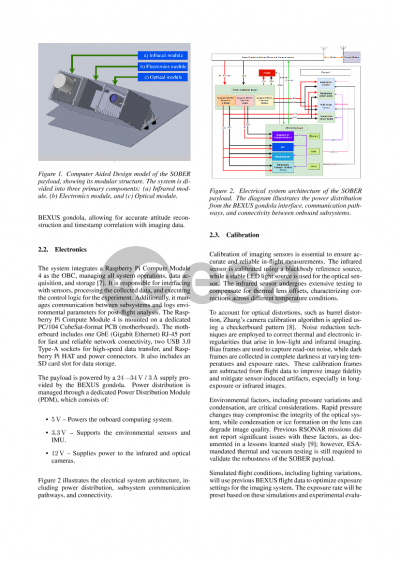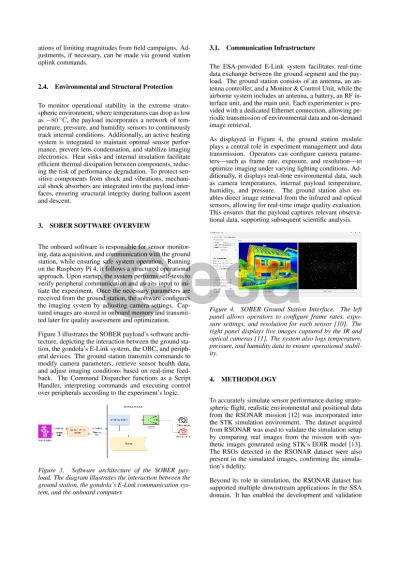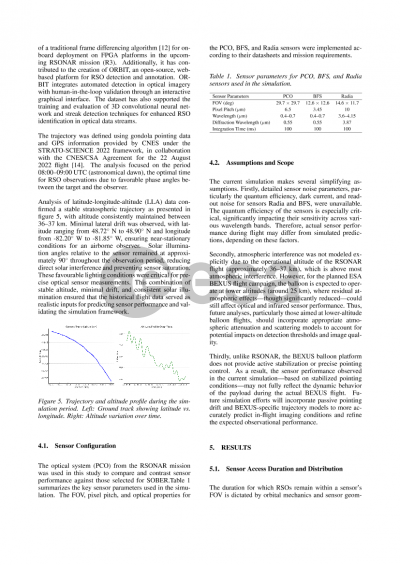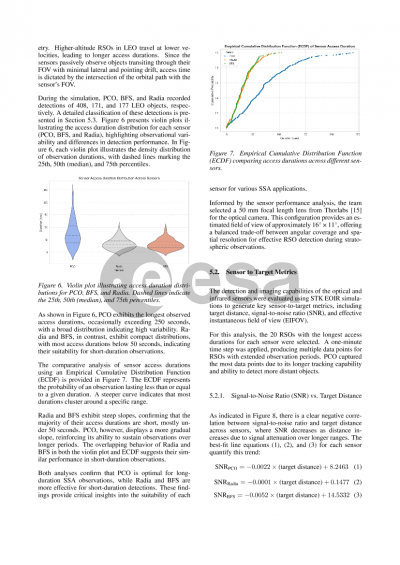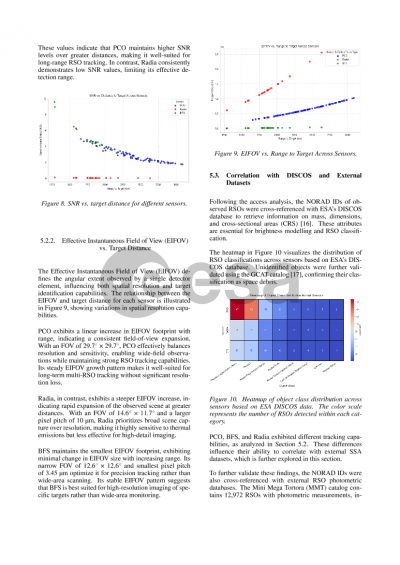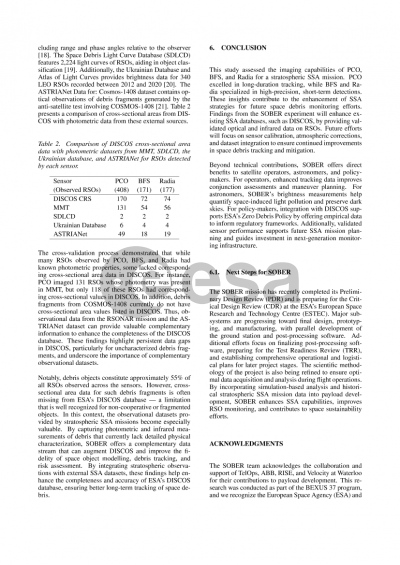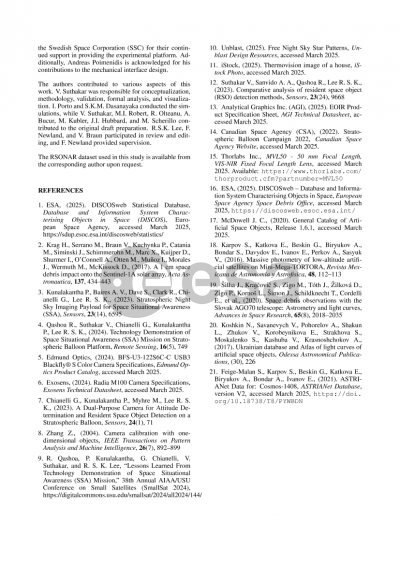Document details
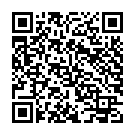
Abstract
The Low Earth Orbit (LEO) environment has expanded rapidly in recent years due to standardization, miniaturization, and increasing commercial activity. With launch traffic reaching record highs and the deployment of large satellite constellations, the growing population of Resident Space Objects (RSOs)—including satellites, defunct spacecraft, and debris—poses risks to space operations and astronomical observations. Even small-scale objects can generate hazardous collisions, as demonstrated by the Sentinel-1A incident in 2016. Effective tracking and cataloging are therefore essential for Space Situational Awareness (SSA).
This paper introduces the Space Object Brightness Evaluation and Reference (SOBER) mission, an SSA initiative leveraging optical and infrared observations from a stratospheric balloon platform. Operating above 25 km, this platform minimizes atmospheric interference, enabling more precise RSO brightness measurements. This study serves as a performance evaluation of three key sensors—PCO and BFS (optical), and Radia (infrared)—using Systems Tool Kit (STK) simulations informed by historical flight data. Tracking duration, signal-to-noise ratio, and spatial resolution were analyzed to assess each sensor’s suitability for future SSA missions.
A correlation analysis was conducted between simulated detections and existing SSA datasets, including ESA’s DISCOS database, the GCAT catalog, and public photometric repositories. This approach enabled the validation of observed RSOs, the identification of uncharacterized debris fragments, and the enhancement of RSO profiles through data fusion.
By capturing both reflected and emitted radiation, SOBER characterizes the impact of space debris and atmospheric light pollution on astronomical observations, supporting ESA’s Zero Debris policy and the Dark \& Quiet Skies initiative. The mission payload includes optical and infrared sensors undergoing technology demonstration, selected for their potential to image RSOs and gain in-flight validation for future in-orbit deployments.
SOBER will measure the photometric and astrometric properties of RSOs across multiple spectral bands. The optical sensor will quantify brightness in visible bands, providing data on reflectivity, visual magnitude, and attitude stability. Meanwhile, the thermal sensor will capture emitted infrared Radiation, offering insights into material composition and differentiating between active satellites and inert debris.
By integrating optical and thermal sensor data, SOBER will provide comprehensive RSO brightness profiles, significantly enhancing SSA capabilities. This multispectral approach supports ESA’s Zero Debris policy by providing critical data to inform mitigation strategies, reduce artificial light pollution, and preserve dark skies.
Preview
